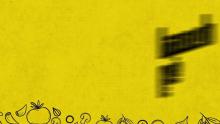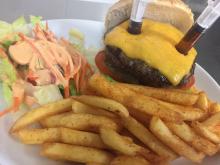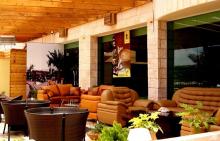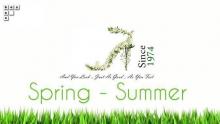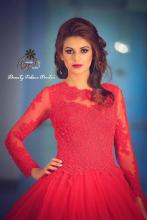Four Contemporary Palestinian Artists Exhibit at the CI2016, Istanbul
Gallery One is pleased to invite you to the 11th Edition of Contemporary Istanbul. Gallery One will be presenting artworks by four contemporary Palestinian artists for the 11th Edition of Contemporary Istanbul. Artists who have been recently exhibited at both regional and international venues, including: Sharif Waked, Khaled Jarrar, Wafa Hourani and Amer Shomali.
Sharif Waked, who is an increasingly acclaimed visual artist, explores the iconoclasm: as in the destruction of cherished monuments, institutions, and values, or the destruction of religious images deemed heretical. The breaking of image and text runs through three ongoing series: Just a Moment, dot.txt and Tugra, all of which will be exhibited at CI2016. Dot.txt is based on colorful; polka dotted wrapping paper that Waked found in Ramallah. Waked added white labels to incorporate texts and patterns. Dot.txt #16 (Arab Idol) alludes to the extreme admiration and idol worship within the context of the transnational television entertainment industry. Dot.txt #12 (One Gram of Powder) recalls the Russian avant-garde artist Kazmir Malevich. In 1919, the Soviet government feared that post-revolutionary disorder would destroy museums and art collections. Malevich made a radical suggestion: if a corpse would result in “one gram of powder,” then the entirety of all past art epochs could be burned and made to fit in one pharmacy. Waked’s work Tugra, on the other hand, takes Israeli soldiers’ two most common directives in Hebrew inflected Arabic—“Your I.D.!” (iib hawiya) and “Get Out of Here!” (yalla ruch min hon)—and places them in the form of the tugra. The tugra was Sulayman the Magnificent’s imperial monogram, placed on all state documents, written decrees, and coins issued from the royal court. Language and form are taken apart and reshaped, such that the meaning can be modified through destruction and distortion, in the hopes that what has been previously canonized and institutionalized may possess new forms and meanings.
As for Khaled Jarrar, he tends to work with photographs, videos, installations, films, and performances – the performative interventions are focused on his native Palestine, exploring the sociocultural impact of modern-day power struggles on ordinary citizens. Jarrar’s Upcycle the Wall series draws the viewers’ attention to the debilitating Israeli occupation of Palestine. Jarrar does so with sculptures made of reconstituted concrete, extracted from the apartheid wall that illegally annexes and cuts through parts of the West Bank. Those who look onto the sculptures may begin to consider how deeply the political situation is implicated within the work, yet the intervention becomes apparent when an object of war gains the possibility to perform an alternative presence.
Unlike Waked and Jarrar, Wafa Hourani attempts to reshape the world through magic and illusions. He is well known for his large sculptural Future Cities series. It comprises of three future, fictional scenarios taking place at the Qalandia refugee camp in the years 2047, 2067, and 2087 – all of which are monumental, historical anniversaries in the future of the Palestinian struggle for freedom. Hourani revisits the utopian genre to produce architectural models for major cities as he envisions them to look fifty years from now, including their sociological, environmental, and behavioral parameters. Gallery One will be showing two of his sculptures at the IC2016, Darwin was Palestinian; which depicts the future Palestinian human with a neck longer than the Apartheid Wall - whereby this evolution theory acts as a metaphor for the human rights of Palestinians - that the more rights they gain, the more they will ‘evolve’; and this is an extension of rights through the flesh, as though it is a bodily geography describing its own history. The humor in this situation seeks to soften the impact of tragedy; as the common Arab proverb goes, “We cannot help but laugh at a tragic disaster.”
Last but not least, Amer Shomali is a multidisciplinary artist. He uses painting, film, digital media, installations and comics as tools to critically explore and interact with the sociopolitical scene in Palestine. Some of his other works often highlight the paradoxes, irony and absurdity involved in life under occupation. In his work Black Holes which is to be exhibited at CI2016, Shomali examines the depilating impact the invasion of Iraq and the aftermath incidents had on the state and its currency, as they were decimated, eroded, leaving behind black scars and black holes that swallowed the lives and dreams of entire nation.
Though they come from similar backgrounds, the four artists’ works vary greatly in the mediums and themes explored, each addressing as well as defining a unique landscape, both aesthetically and conceptually, where Palestinians constantly attempt to make sense of the multitude of realities and reflections, namely that of life under military occupation.
Gallery One: B1 - 111
Opening Hours:
2 November / Preview (by invitation only)
3 November 2016, Thursday 11:00 - 20:00
4 November 2016, Friday 11:00 - 21:00
5 November 2016, Saturday 11:00 - 20:00
6 November 2016, Sunday 11:00 - 19:00
For press and further details please contact us at: [email protected]


